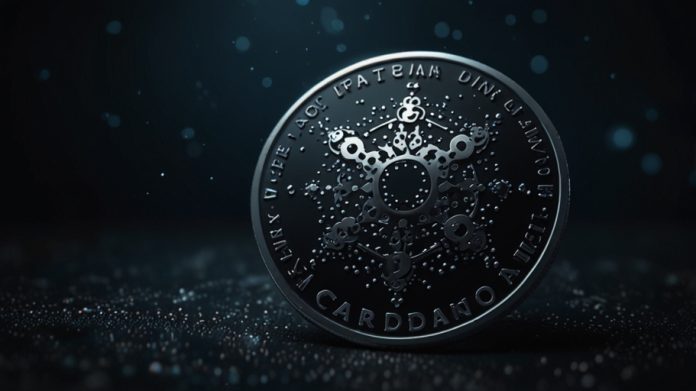Ranking 10th globally, Cardano has a market capitalization of $21.85 billion and the number of circulating ADA tokens is 35.28 billion, making it currently the most innovative blockchain platforms in the industry. Price-wise, it is being exchanged at around $0.6194 reflecting a 0.85% increase over the last 24 hours.
Created by Charles Hoskinson and Jeremy Wood back in 2017, Cardano is a third-generation blockchain that is aimed at eliminating the drawbacks of earlier technologies and, hence, the development of these newcomers.
Proof-of-Stake (PoS) protocol, Ouroboros, which is the first of its kind in a cryptographic system that has no need for a lot of energy, has meanwhile secured the same level of a wide range of devices and provides high security; thus, the energy needed is reduced.
Layered architecture is another defining feature of Cardano. It has two layers: Cardano Settlement Layer (CSL) to carry out transactions and Cardano Computation Layer (CCL) for the implementation of smart contracts. With such a modular design, the project can be easily upgraded and the network’s scalability can be provided, which makes developers and enterprises satisfied with this project.
The governance system of the platform is also worth noticing. The Voltaire stage, in particular, represents the democratization of the ADA holders. In this stage, the community has complete participation in the process through voting and treasury management. Therefore, power is handed back to the community.
The Goguen phase is where Cardano added its capability of smart contracts for creating decentralized applications (dApps). Furthermore, the platform lends itself to a variety of programming languages, including Plutus and Marlowe among others. Thus complex financial applications and beginner-friendly use cases are both covered by the platform.
Engineering for scalability has always been the top priority in Cardano’s development. The network has been utilizing technologies such as Hydra and pipelining so as to enhance the transaction throughput which capable of handling hundreds of transactions per second. There are also sidechains which can be employed that will ensure the main blockchain remains unhampered, even during peak hours of transaction.
The project’s other specialty is interoperability. It can be achieved with the help of the Inter-Blockchain Communication Protocols (IBC). By employing IBCs, the network becomes customizable for a variety of tasks, and thus this feature becomes extremely attractive to enterprises when looking for cross-chain solutions with the least of friction.
In recent years, there has been some well-founded concerns circulated in the community about the environmental aspects of blockchain technology. However, Cardano has effectively dealt with the issue by running PoS as the consensus mechanism. As opposed to the power-hungry PoW, Ouroboros only needs staking pools to validate transactions, hence the environmental impact of the protocol process is greatly reduced.
Aside from the technology, Cardano also made great strides in the business sector which is the most important for decentralization. Together with the governments and organizations, Cardano has become the defi industry forerunner. Among the use cases we can mention the implementation of identity verification systems and supply chain management. Cardano’s use cases always move forward.
One of the important aspects of Cardano’s ecosystem is its native crypto—ADA. The utility of the token is reflected in the transactions fee it incurs, staking rewards, and governance participation. With a total maximum supply of only 45 billion tokens, ADA becomes scarce thereby guaranteeing its value in the long run.
The reliance on research-focused development among all the competitors makes the platform distinguish. Each part of Cardano is dead serious about getting to a new stage only after the peer review is complete so the highest reliability and security requirements are secured. That’s why it is believed to be one of the most scientifically advanced blockchains in the world.
The journey of Cardano has just begun. The forthcoming stage of Voltaire is envisioned to bring the community and individual governance features, such as liquid democracy through CIP-1694 proposals. Consequently, these projects will eliminate any central decision-making process, and the community will make the important decisions about upgrading the network.
Even though Cardano has achieved a lot so far, it is not without obstacles. Some of the challenges it is currently facing are increasing competition in the blockchain space, and the unpredictable market conditions. Nevertheless, Cardano’s rock-solid foundation and ceaseless innovation have made it the star to watch out for in the years to come.
At the present time, Cardano’s trading volume over the last 24 hours is worth $958.91 million, indicating an impressive 27.69% surge. The upturn in activity has registered an increasing interest and confidence on the part of investors in the blockchain’s long-term potential that Cardano represents.
Finally, with its emphasis on scalability, sustainability, and security, Cardano signifies a revolution in the blockchain field. As it matures, governed by the community and cutting-edge innovation, it remains the most attractive choice for developers, enterprises, and investors.



 Bitcoin
Bitcoin  Ethereum
Ethereum  Tether
Tether  XRP
XRP  Solana
Solana  USDC
USDC  TRON
TRON  Cardano
Cardano  Lido Staked Ether
Lido Staked Ether  Avalanche
Avalanche  Toncoin
Toncoin